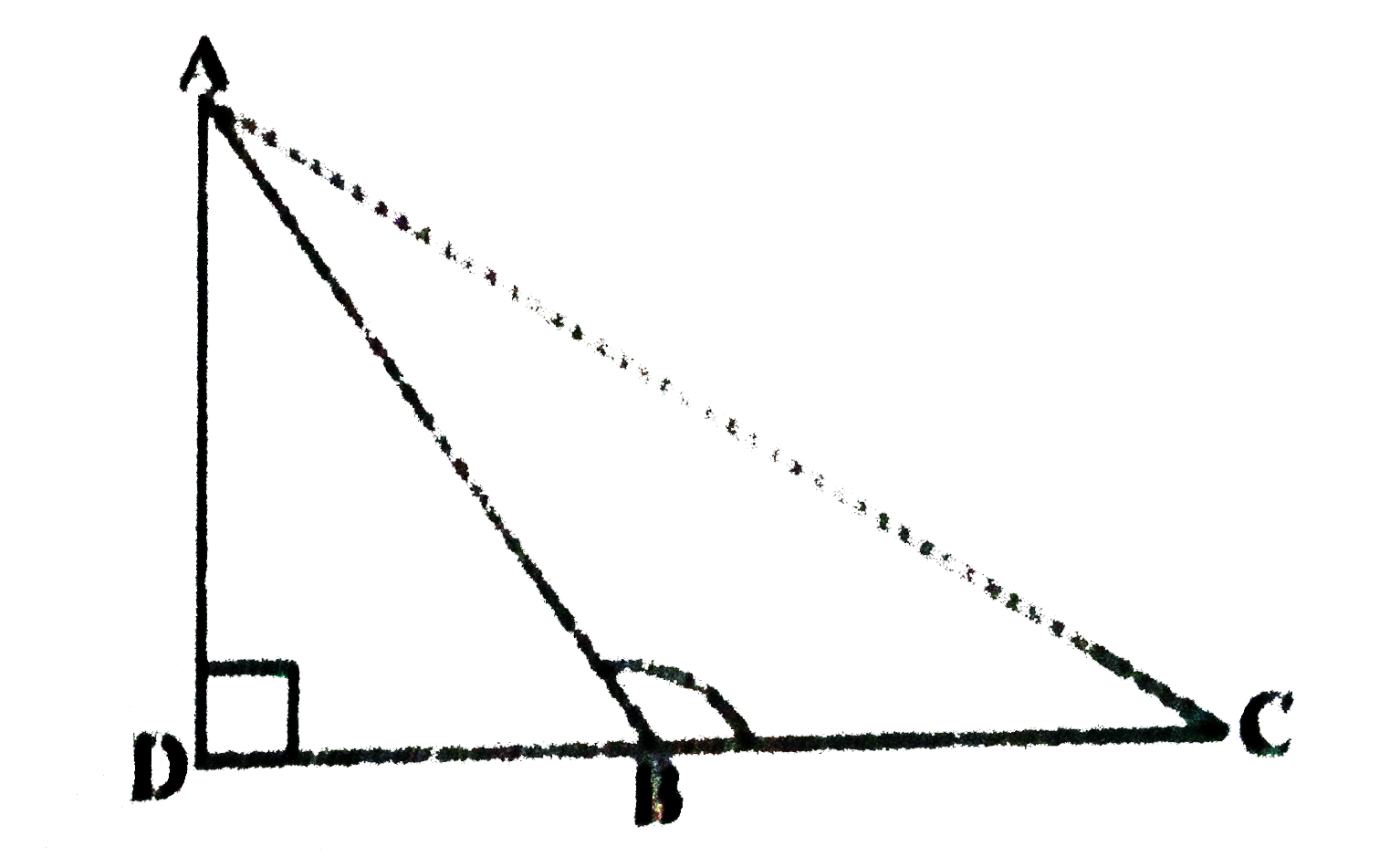Comprehension (For Q.No.1 to 3) Let f(x)=x2+2ax+b,g(x)=cx2+2dx+1 be quadratic expressions whose graph is a as shown in the figure. Here it is given that ∣∣AA′∣∣=∣∣BB′∣∣and∣∣OA′∣∣=|OB| Which of the following statements is correct a2+d=d2+c (b) a+d=b+c a2+d2=c+b (d) bc+c+a2c+d2
To solve the problem, we need to analyze the given quadratic functions and the conditions provided. Let's break down the solution step by step.
Step 1: Identify the Quadratic Functions
We have two quadratic functions:
1. f(x)=x2+2ax+b
2. g(x)=cx2+2dx+1
Step 2: Find the Vertex of Each Quadratic
The vertex of a quadratic function ax2+bx+c is given by the formula:
(−b2a,−D4a)
where D is the discriminant D=b2−4ac.
For f(x):
- Here, a=1, b=2a, and c=b.
- The x-coordinate of the vertex A′ is:
x′A=−2a2⋅1=−a
- The y-coordinate of the vertex A′ is:
y′A=−(2a)2−4⋅1⋅b4⋅1=−4a2−4b4=b−a2
Thus, the vertex A′ is at (−a,b−a2).
For g(x):
- Here, a=c, b=2d, and c=1.
- The x-coordinate of the vertex B′ is:
x′B=−2d2c=−dc
- The y-coordinate of the vertex B′ is:
y′B=−(2d)2−4c⋅14c=−4d2−4c4c=c−d2c
Thus, the vertex B′ is at (−dc,c−d2c).
Step 3: Analyze the Given Conditions
We are given two conditions:
1. |AA′|=|BB′|
2. |OA′|=|OB|
From the first condition:
b−a2=c−d2c
From the second condition:
−a=−dc⟹a+dc=0⟹d=−ac
Step 4: Substitute and Simplify
Substituting d=−ac into the first condition:
b−a2=c−(−ac)2c=c−a2c2c=1−a2c
Rearranging gives:
b=1−a2c+a2
Step 5: Check the Options
Now we need to check which of the given statements is correct:
1. a2+d=d2+c
2. a+d=b+c
3. a2+d2=c+b
4. bc+c+a2c+d2
By substituting d=−ac and simplifying each option, we can find which one holds true.
Conclusion
After checking the options with the derived relationships, we find that the correct statement is:
(b) a+d=b+c.
We have two quadratic functions:
1. f(x)=x2+2ax+b
2. g(x)=cx2+2dx+1
The vertex of a quadratic function ax2+bx+c is given by the formula:
(−b2a,−D4a)
where D is the discriminant D=b2−4ac.
- Here, a=1, b=2a, and c=b.
- The x-coordinate of the vertex A′ is:
x′A=−2a2⋅1=−a
- The y-coordinate of the vertex A′ is:
y′A=−(2a)2−4⋅1⋅b4⋅1=−4a2−4b4=b−a2
Thus, the vertex A′ is at (−a,b−a2).
- Here, a=c, b=2d, and c=1.
- The x-coordinate of the vertex B′ is:
x′B=−2d2c=−dc
- The y-coordinate of the vertex B′ is:
y′B=−(2d)2−4c⋅14c=−4d2−4c4c=c−d2c
Thus, the vertex B′ is at (−dc,c−d2c).
We are given two conditions:
1. |AA′|=|BB′|
2. |OA′|=|OB|
b−a2=c−d2c
From the second condition:
−a=−dc⟹a+dc=0⟹d=−ac
Substituting d=−ac into the first condition:
b−a2=c−(−ac)2c=c−a2c2c=1−a2c
Rearranging gives:
b=1−a2c+a2
Now we need to check which of the given statements is correct:
1. a2+d=d2+c
2. a+d=b+c
3. a2+d2=c+b
4. bc+c+a2c+d2
After checking the options with the derived relationships, we find that the correct statement is:
(b) a+d=b+c.
Topper's Solved these Questions
Similar Questions
Knowledge Check
Let a,b,c , d ar positive real number such that ab≠cd, then the roots of the equation: (a2+b2)x2+2x(ac+bd)+(c2+d2)=0 are :
Areal and distinctBral and equalCimaginaryDnothing can be saidIf a+b=1,c+d=1anda−b=dc ,t hen the value of c2−d2 is
AabBbaC1D−1
If x2a+y2b=1 and x2c+y2d=1 are orthogonal then relation between a , b , c , d is
View SolutionIn ABC , AD is a median. Prove that AB2+AC2=2 AD2+2 DC2 .
View SolutionSum of roots of equations f(x)=0andg(x)=0is 0 (b) 2(a+d) (c) 1+b (d) 2a−2dc
View SolutionIn figure, O is a point in the interior of a triangle ABC, OD⊥BC,OE⊥ACand OF⊥AB. Show that
(i) OA2+OB2+OC2−OD2−OE2−OF2=AF2+BD2+CE2
(ii) AF2+BD2+CE2=AW2+CD2+BF2

View SolutionIn figure, ABC is triangle in which ∠ABC=90∘and AD⊥CBproduced. Prove that AC2=AB2+BC2−2BC.BD.

View SolutionLet a, b, c and d be non-zero numbers. If the point of intersection of the lines 4ax+2ay+c=0 and 5bx+2by+d=0 lies in the fourth quadrant and is equidistant from the two axes then (1) 2bc−3ad=0 (2) 2bc+3ad=0 (3) 3bc−2ad=0 (4) 3bc+2ad=0
View Solution